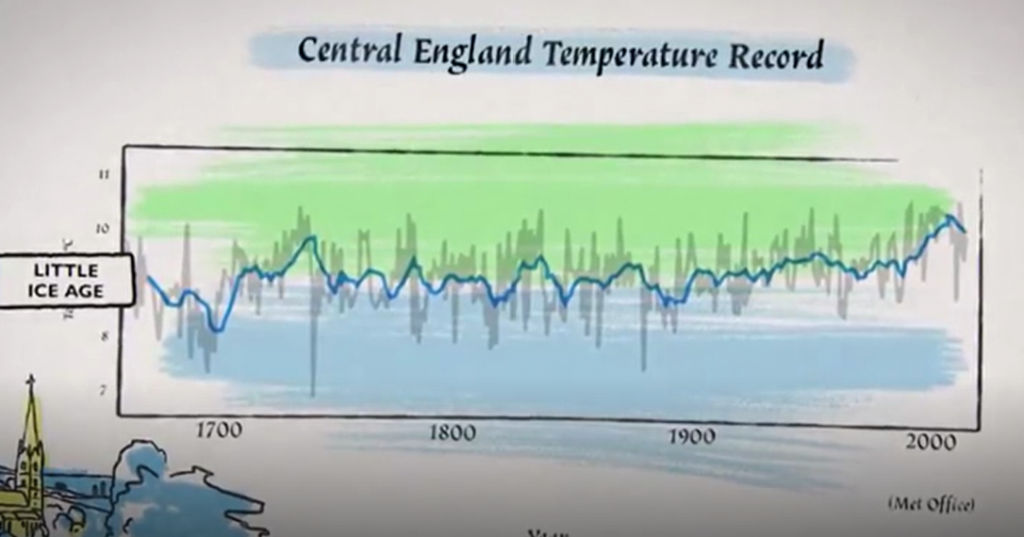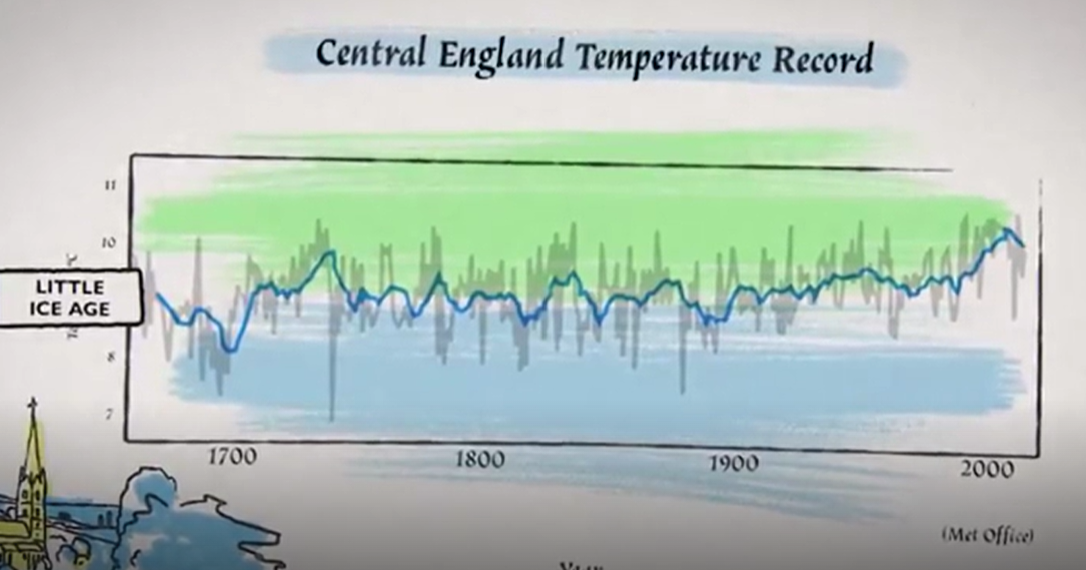Temperature records from weather stations are notoriously unreliable and can even be misleading. Despite this fact, they are often quoted in the media as proof of global warming, such as “the hottest day on record” or “the warmest February ever.”
Beware!
Two sources of error in temperature records are widespread, but rarely mentioned in the media.
“Heat Island Effect”
Many weather stations in the U.S. and in developed nations were established over a hundred years ago. They were sited in more rural areas that did not feel the effects of urban development, widespread pavement and the advent of machinery such as cars and trucks, air conditioning and industrial plants.
As this effect of urbanization has spread and grown around the formerly rural weather stations, the inevitable “heat island” effect has distorted the temperature record, making for warmer temperatures. This trend supports the climate change trends of higher temperatures.
In reality, the heating measured by these stations is limited to just the areas affected by urbanization. The more rural stations in the region show little in the way of rising temperatures.
The 1930s Were Warmer
The last decade of elevated temperatures occurred in the 1930s. Nationally, the more rural stations, which recorded the 1930s as a relatively warm period, now show temperatures as approaching the same level.
But the level of CO2 in the atmosphere in the 1930s was much lower. So, it is clear that surface temperatures are affected by more than just CO2 levels. Over the millennia, earth’s temperatures have risen and fallen repeatedly, independent of any effects of human activity. And independent of burning fossil fuels. Fossil fuels didn’t create Lake Winnipesaukee, glaciers did. Yet something other than human activity caused the ice to melt and the glaciers to recede, 15,000 years ago.
“Ghost” Stations
The second source of error in temperature records is called “ghost” stations.
Running a weather station is a labor-intensive job. It is tedious and demanding of attention to detail. Many weather station operators have retired or have died. Few younger people have pursued the vocation of being a weather station observer.
The loss of weather station operators means that over time, the old US Weather Bureau, now subsumed under the National Oceanic and Atmospheric Administration (NOAA), has lost a lot of the older weather stations.
NOAA now interpolates and smooths data records to fill in the gaps, as reported in a recent April 9, 2024 Epoch Times article, “Hidden Behind Climate Policies, Data from Nonexistent Temperature Stations.” NOAA says that upwards of 30% of its existing weather station base has been lost to the retirement or death of older weather observers. Interpolation is a fancy way of saying “fill in the gaps as best as we can.
These lost stations are now referred to as “ghost” stations, and their loss affects our ability to draw conclusions from the stations that remain.
Survivors Are Prized
Long-term climate records are truly prized for their continuity and durability. They are windows into the past and what people experienced.
There is a station in central England that has several notable features in this regard. It is located in a rural area of England, so it has avoided the troubling effects of urbanization and “heat islands.” Here is a graph from “Climate: The Movie” showing the long-term temperature record.

Its longevity is a source of wonder given the growing presence of “ghost” stations. Its record goes back 350 years to the mid-1600s. That is even before “The Little Ice Age” of the 1700s.
Temperatures recorded by this station have remained remarkably stable during this time, rising only about 1 degree Celsius over the 350 years. Even from the coldest months of “The Little Ice Age” to the present, this station’s data shows that temperature has only risen 2.5 degrees Celsius.
This station’s temperature record is consistent with satellite data from the early 1980s to the present which has shown temperature recovering from the relatively cooler years in the 1970s to what was the warmer period of the 1930s.
Taken As a Whole
Temperature varies by several degrees Celsius over decades of time. It’s important to look at the longer-term data trends and exclude the effects of urbanization and “ghost” stations.
Given these cautions, it is difficult to agree with media-induced hysteria about “the hottest day on record.” Remember that we are still in the last stages of the most recent Ice Age and even the recent temperatures have been hotter than what we see today.
And these temperature variations are not attributable to variations in CO2 or the burning of fossil fuels. But we’ll touch on that in a later article.











